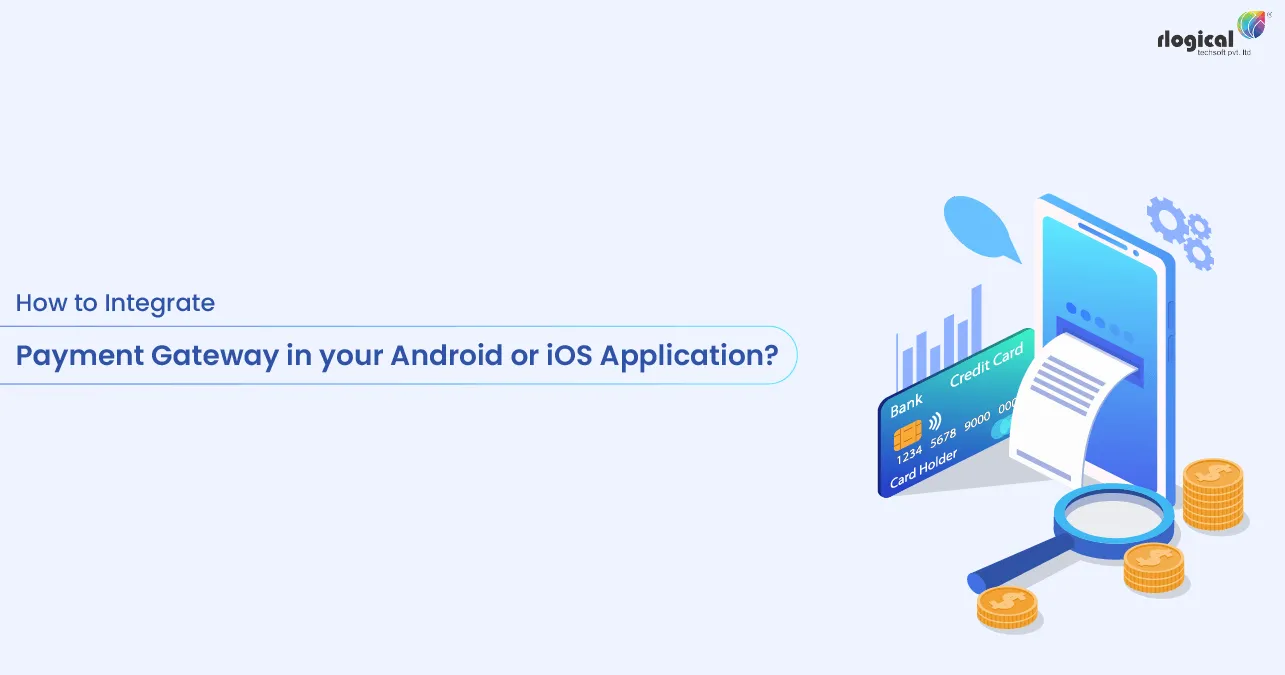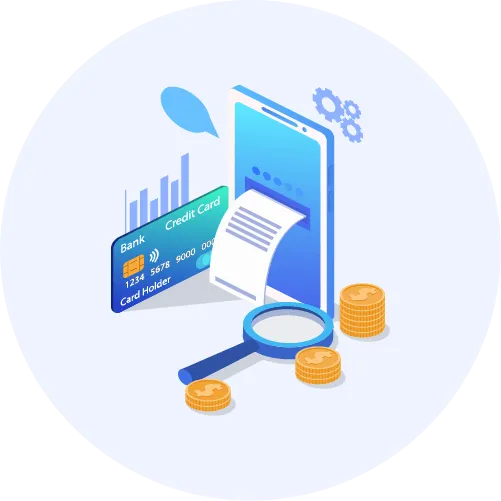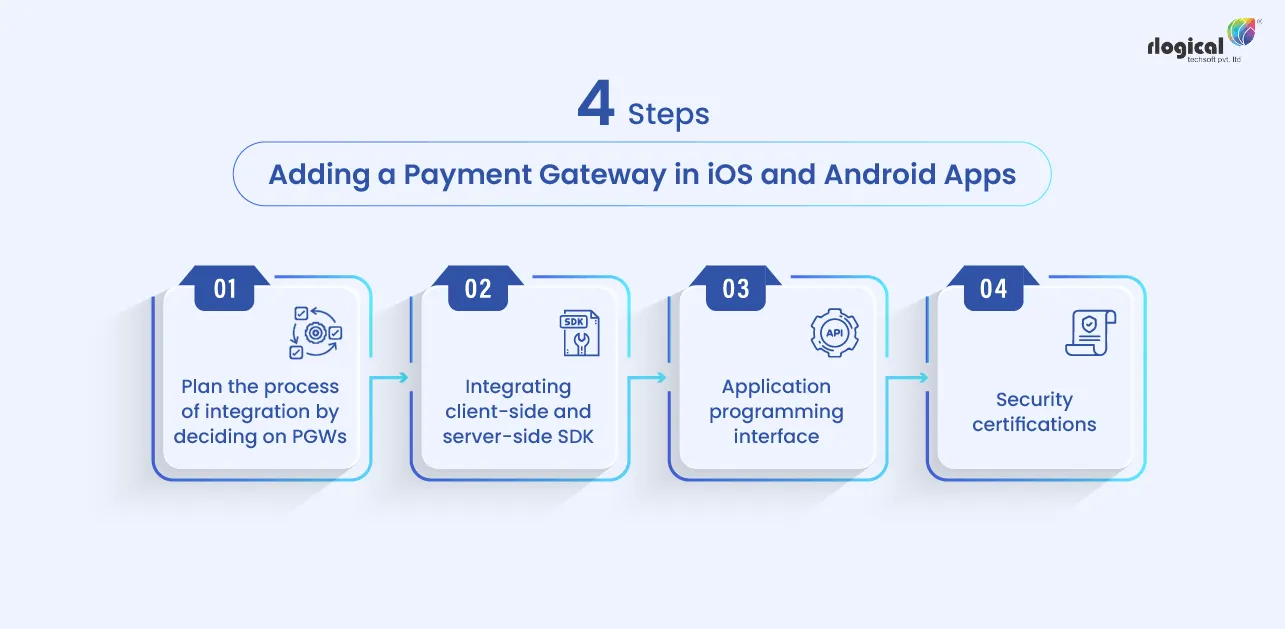
The concept of transferring money smoothly into individual accounts using our mobile devices and receiving our products in return is fantastic. The procedure of seamless transactions has been simplified by the integral payment gateways in the e-commerce stores out there. In-app purchases have become a standard for most e-commerce applications, and customers expect it from a top-notch application providing high-quality service. This particular trend will be continuing shortly and it will be evolving slowly and steadily.
We all expect the mobile payment volume to increase drastically when the year 2021 comes to an end! It has been depicted by research that approximately 40 million Americans own smartphones at present, and they have accepted online payment methods. It has been estimated that the online payment transaction volume will reach $280 billion by next year. Individuals are now living at a time when e-commerce business solutions and online shopping have become extremely popular. This has enabled e-commerce applications to integrate and implement payment gateways in mobile applications that will finish any online transaction with only a few clicks.
Mobile payments have become quite prevalent in the recent past by offering a convenient way to make purchases. They allow the users to save considerable time while enjoying a smooth shopping experience. Companies are provided with an outstanding competitive benefit by the mobile payment gateway integration, given that many individuals like the idea of shopping online.
It will be possible for the users to make effortless payments by taking advantage of several services like booking a flight or train tickets, buying a product from an e-commerce site, booking a taxi, reserving hotels, and so forth. Moreover, payment gateways in mobile applications aid in increasing sales since it is quite simple to make payments these days. You will come across quite a few payment gateways in mobile apps, which come with different rules, audiences, conditions, and charges. We will try to comprehend the definition of payment gateway before moving ahead in this article.
What do you mean by a Payment Gateway, and why should it be integrated?
Simply speaking, a payment gateway happens to be a business application handling online transactions and transferring amounts between the seller and the customer. Customers make use of this technology to integrate debit cards and credit cards for making payments using mobile apps. After receiving the required information from the consumer, it is responsible for sending it to the financial institutions. The movement of funds into the interbank network happens to be a complicated arrangement of functionalities creating risks related to security assurance. Even though the time taken for a mobile money transfer is not much for the end-user, much effort goes on behind the scenes.
Fortunately, the bank is responsible for data safety and all types of transactions. How is it possible for you to inform the bank regarding this? What happens if the base falls into the hands of the wrong people? Who will be accountable for this? This liability should not be borne by business owners and mobile application developers especially, since everybody will not get the opportunity to carry out financial operations and store user and billing information. Moreover, it will be imperative to pass a complicated PCI DSS licensing procedure which might consume a considerable period for keeping such information and working with the bands directly. The entire thing will be done for you by integrating a payment gateway in mobile applications.
Payment gateway app development is of prime importance, especially if the application deals with grocery shopping, hotel reservations, salon booking, travel bookings, etc.
The most well-known payment gateways for mobile apps. After getting an idea of payment gateways, we will discuss some examples of well-known payment gateways along with their advantages and drawbacks.
1. PayPal
Right now, this method of payment is becoming quite popular in retail, e-commerce, as well as other applications. PayPal happens to be an encrypted redirect gateway providing top-quality features safeguarding the information of the purchaser and that of the merchant. According to the majority of the app developers out there, this is the most user-friendly and convenient payment system installed in mobile apps. Nevertheless, as per this particular payment method policy, the account of the merchant or the purchaser can be easily frozen by people in case there is any type of suspicious activity. Besides this, PayPal’s fee rates are somewhat overpriced right now.
2. SecurePay.com
This particular Australian payment system covers an extensive array of payment options apart from Visa and MasterCard. They likewise accept American Express, Diners Club International, and PayPal cards. Approximately 2.5% will be taken from each transaction, and it is possible to integrate the Gateway into iOS, Android, and Windows applications.
3. Paytm
This one is a wallet that is considered the biggest payment method in the Indian subcontinent. Nevertheless, it has become quite popular even globally thanks to its plethora of advantages:
- Paytm provides a lucrative cashback feature, and the user can earn back cash by choosing the categories.
- In case any client confronts any awkward situation regarding the transaction, the cash will be put back within only a few hours on their card, unlike other payment procedures.
- Payment method integration in iOS and Android is feasible in many applications such as travel-related applications, shopping platforms, and Uber.
4. Stripe
Stripe is yet another well-known payment process used in different types of e-commerce, platform-based applications, SaaS payments, and non-profitable organizations. Stripe enables the effortless transmission of large volumes of cash in SMEs and large corporations. Compared to PayPal, the percentage of charges is much lower at $0.3 and 2.9% for every transaction. Even though this payment method comes with high security levels, certain transactions might become blocked in the event of any fraudulent notices.
5. Apple Pay and Amazon Pay
While Amazon Pay will be applicable in almost every OS, Apple Pay happens to be the process utilized primarily in iOS operating systems. The most notable attribute of Apple Pay is that it enables customers to pay using Touch ID and Face ID. Nevertheless, approximately 3% charges will be taken by the system for every transaction. Amazon Pay is also ideal for BigCommerce apps. This payment gateway’s fees will depend on the kind of purchase: it is $0.3 + 2.9% for domestic transactions and can be as much as 4% for foreign transactions.
Must Read: Payment App Development: Steps to Create App and Features to Include
How is adding a payment gateway in iOS and Android applications?
This section of this article will discuss the integration of a payment gateway in an app running on an iOS or Android OS. You’ll find this guide to be useful. If you have no idea where to start and how long it will take to make payment apps with Android app development services and iOS app development services. Let’s have a look at the steps for deeper understanding.
Step 1: Plan the process of integration by deciding on PGWs
The country targeted by you, the size of your company, and the industry where it will operate will figure out which particular payment gateway will fulfill your requirements. If, for instance, you are operating a retail application available for customers globally, it will be a good idea to integrate several methods such that users will have several options.
Step 2: Integrating client-side and server-side SDK
Any payment gateway you consider for implementing into your application will provide unique Software Development Kits (SDKs). These SDKs are employed for accumulating, storing, and handling all the information associated with the payment for the merchant and the client. One will come across SDKs on the payment gateway’s official platform, which your software engineering team can use.
Step 3: APIs
APIs will allow developers to get to the application’s backend and request to obtain the reply from the server. APIs will be facilitating the procedure of managing debit card and credit card payments. Thus, making it quite simple to transact between a client and a merchant in a risk-free manner. It is the most critical stage for creating BNPL apps. However, if your focus is primarily on the BNPL market for payments, you can check out the article on BNPL app development now!
Step 4: Security certifications
As mentioned earlier, payment gateways are quite advantageous. They feature an extremely secure environment enabling you and your user to exchange billing info securely. Nevertheless, it might be sensible to set up additional certifications complying with the Payment Card Industry Data Security Standard (PCI DSS) to increase security levels. Also, Secure Sockets Layer (SSL) assures to protect the sensitive information of the merchant plus the client.
Conclusion
It is quite time-consuming to come across a payment gateway solution that will fulfill your requirements. If you are dealing with any type of transaction, it will be sensible to accept payments in your mobile application. Using a payment gateway in mobile applications will be quite advantageous since you will automate online cash transfers by making them last for several seconds rather than several days.
A payment gateway is considered a connecting link between the customer and the financial institution. It prevents any worry related to fraud identification, risk-free data storage, and transaction security. You can get started with a reliable payment app development company!
Jatin Panchal
Jatin Panchal is the Founder & Managing Director at Rlogical Techsoft Pvt. Ltd. For more than a decade, he has been fostering the organization's growth in the IT horizons. He has always bestowed personalized approaches on .NET, PHP, Flutter, and Full-Stack web development projects. From startups to large enterprises, he has empowered them to accomplish business goals. By delivering successful industry-driven solutions, he is encouraging the capability of AI, ML, blockchain, and IoT into custom websites and hybrid mobile applications.
Related Blog
Categories
- All
- Amazon Web Services (AWS)
- ASP.Net Development
- Azure Web App
- Big Data Analytic
- Customize
- Digital Marketing
- Drupal Development
- E-commerce web development
- Education Mobile App Development
- Enterprise Application
- Event Management App Development
- Fintech
- Fitness App Development
- Food Delievery
- Front-End Development
- Healthcare App Development
- Hire Dedicated Developers
- Hotel Booking App
- IT Industry
- JavaScript Development
- Mobile App Development
- On Demand App Development
- On Demand Healthcare App Development
- PHP Development
- POS Software Development
- Real Estate Mobile App Development
- Retail Business App Development
- Salesforce
- Social Media Development
- Software Development
- Technology
- Transportation App Development
- UI/UX Design
- Web Design
- Web Development
- Web Services
- Web/Data Scraping Services
- WordPress



 Jatin Panchal in Mobile App Development
Jatin Panchal in Mobile App Development 






